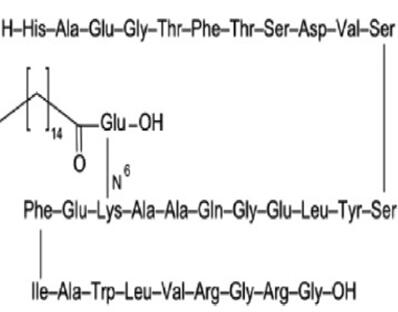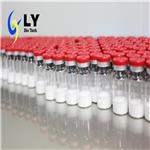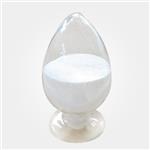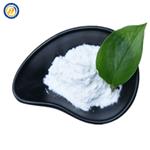Liraglutide
- CAS No.
- 204656-20-2
- Chemical Name:
- Liraglutide
- Synonyms
- Victoza;Liraglutide Acetate;NN 2211;NNC 90-1170;Liraglutide;Liraglutida;Liroglutide;Liraglutidum;Liraglutidec;The lalu peptide
- CBNumber:
- CB31179049
- Molecular Formula:
- C172H265N43O51
- Molecular Weight:
- 3751.202
- MDL Number:
- MFCD31689263
- MOL File:
- 204656-20-2.mol
- MSDS File:
- SDS
| Melting point | >182°C (dec.) |
|---|---|
| storage temp. | Refrigerator |
| solubility | DMSO (Slightly), Water (Slightly) |
| form | Solid |
| color | White to Off-White |
| Sequence | H-His-Ala-Glu-Gly-Thr-Phe-Thr-Ser-Asp-Val-Ser-Ser-Tyr-Leu-Glu-Gly-Gln-Ala-Ala- |
| InChIKey | YSDQQAXHVYUZIW-VTFFJMQZNA-N |
| FDA UNII | 839I73S42A |
| NCI Drug Dictionary | liraglutide |
| ATC code | A10BJ02 |
SAFETY
Risk and Safety Statements
| Symbol(GHS) |  GHS07 |
|---|---|
| Signal word | Warning |
| Hazard statements | H315-H319-H335 |
| Precautionary statements | P261-P305+P351+P338 |
Liraglutide price More Price(23)
| Manufacturer | Product number | Product description | CAS number | Packaging | Price | Updated | Buy |
|---|---|---|---|---|---|---|---|
| Cayman Chemical | 24727 | Liraglutide ≥95% | 204656-20-2 | 500μg | $93 | 2024-03-01 | Buy |
| Cayman Chemical | 24727 | Liraglutide ≥95% | 204656-20-2 | 1mg | $176 | 2024-03-01 | Buy |
| Cayman Chemical | 24727 | Liraglutide ≥95% | 204656-20-2 | 5mg | $728 | 2024-03-01 | Buy |
| Tocris | 6517 | Liraglutide | 204656-20-2 | 1 | $382 | 2021-12-16 | Buy |
| TRC | L468860 | Liraglutide | 204656-20-2 | 10mg | $495 | 2021-12-16 | Buy |
Liraglutide Chemical Properties,Uses,Production
Overview
Type 2-diabetes mellitus(T2DM) is a progressive disease associated with significant morbidity and mortality. Glucagon like peptide-1(GLP-1) is an incretin hormone secreted from the small intestine that lowers fasting and postprandial glucose through multiple mechanisms including glucose-dependent insulin secretion, reduction of glucagon secretion, delaying gastric emptying and increased satiety[1-4]. Liraglutide, a human glucagon-like peptide 1(GLP-1) analogue is a treatment for T2DM that is administered as a once-daily subcutaneous injection. Liraglutide is a GLP-1 analog in which lysine at position 34 has been replaced with arginine, and palmitic acid has been attached via glutamoyl spacer to lysine at position 26[1-4]. No animal-derived raw materials or excipients are used in the production of liraglutide. The drug product is a solution for subcutaneous injection containing 6.0 mg/ml of the drug substance presented in a pre-filled, multi-dose pen-injector. Unlike GLP-1, liraglutide has a pharmacokinetic and pharmacodynamic profile in human suitable for once daily administration. Following subcutaneous administration, the protracted action profile is based on three mechanisms: self-association, which results in slow absorption, binding to albumin and stability toward the DPP-4 enzyme both resulting in a prolonged plasma half-life. The analog is produced as the polypeptide precursor by r-DNA technology with Saccharomyces cerevisiae strain YES2085 as the production strain. The peptide is acylated with a fatty acid chain during down-stream processing[1-4].
Figure 1 the chemical structure of Liraglutide
Liraglutide is a long-acting GLP-1 analog, designed to bind to albumin as the main molecular mechanism of protraction[1-4]. In vitro, this was shown in the receptor cAMP as well as binding assay where addition of albumin shifted the dose-response and/or binding curve to the right. The apparent reduced potency of liraglutide underlines that only the free fraction of liraglutide is responsible for its pharmacological effect in vitro as well as in vivo. Furthermore, liraglutide in a pharmaceutical solution forms a micell-like heptamer that may contribute to the slow absorption from the subcutis[1-4]. Liraglutide is a potent, selective and efficacious agonist on the human as well as mouse, rat, rabbit, pig and Cynomolgus monkey GLP-1 receptor. Liraglutide has been shown to exert a number of actions in vitro that are known to be specific GLP-1 effects[1-4]. Liraglutide has also been shown stimulate insulin secretion from isolated β-cell islets in a glucose-dependent manner in vitro. Liraglutide-attenuated β-cell apoptosis in vitro under adverse conditions with high concentrations of free fatty acids and proinflammatory cytokines. Moreover, a proliferative effect on primary rat β-cells was demonstrated for liraglutide in vitro whereas no consistent effect was observed under hyperglycemic conditions in vivo[1-4].
Pharmacodynamic and pharmacology properties
Liraglutide(204656-20-2) is an acylated GLP-1 analogue that shares 97 % amino acid sequence homology to human endogenous GLP-1 (7–37)[1–4]. The single amino acid substitution of lysine with arginine at position 34 and the attachment of a C16 fatty acid chain to lysine at position 26 enables liraglutide to self-associate and form a heptameric structure, which delays absorption from the subcutaneous injection site and provides protection against degradation by DPP-4 enzyme and neutral endopeptidases. As a consequence, liraglutide has a much longer half-life than endogenous GLP-1 (&13 h vs. 1.5–2 min)[1–4].
Liraglutide binds to and activates the GLP-1 receptor, which is a membrane bound cell-surface receptor coupled to adenyl cyclase by the stimulatory G-protein (Gs) in pancreatic b cells (but not in pancreatic a-cells) and is the target for endogenous GLP-1[1, 2]. This results in increased intracellular cyclic monophosphate and subsequent liraglutide dose-dependent insulin release in patients with elevated glucose levels. At the same time, liraglutide acts in a glucose-dependent manner to decrease inappropriately high glucagon secretion, thereby blocking the effects of glucagon on hepatic glucose output. In the presence of liraglutide, as blood glucose concentrations decrease, the secretion of insulin diminishes and blood glucose concentrations approach euglycaemia[1, 2]. In addition to these glucoregulatory mechanisms of action in patients with type 2 diabetes, liraglutide slightly delays gastric emptying, and reduces bodyweight and body fat mass by reducing hunger and lowering energy intake; these effects may contribute to the beneficial effects of liraglutide in patients with type 2-diabetes[1, 2, 5, 6]. As reviewed previously[1, 2], in patients with type 2 diabetes and/or in preclinical studies, liraglutide dosedependently reduced glycated haemoglobin (HbA1c), fasting plasma glucose (FPG) and postprandial plasma glucose levels, with sustained improvements in glucose levels over a 24-h dosage interval. In addition, liraglutide increased insulin secretion, reduced postprandial glucagon secretion, improved surrogate measures of b-cell function, reduced systolic blood pressure (SBP) and improved some biomarkers of cardiovascular (CV) risk in patients with type 2 diabetes[1, 2], including suppression of postprandial triglyceride and apolipoprotein B48 levels after a fat-rich meal[7]. Improvements in glycaemic control and other efficacy outcomes in adult patients with type 2 diabetes receiving liraglutide monotherapy or add-on therapies to other antidiabetic drugs in large phase III trials.
Pharmacokinetics properties
The pharmacokinetic profile of subcutaneous liraglutide did not differ to a clinically meaningful extent when different injection sites were used (upper arm, abdomen and thigh)[3]. Following subcutaneous administration, liraglutide was slowly absorbed, with maximum plasma concentrations (Cmax) attained after 8–12h[3, 4]. Liraglutide showed dose-proportional absorption across the therapeutic dose range of 0.6–1.8 mg[3, 4]. Mean Cmax and total exposure of liraglutide after a single 0.6 mg dose were 35 ng/mL and 960 ng??h/mL, respectively[3]. After a 1.8 mg dose, the average steady-state concentration of liraglutide over a 24-h period was 128 ng/mL[3]. Following subcutaneous administration, the mean apparent volume of distribution of liraglutide was 11–17 L[4]. The mean volume of distribution after intravenous administration was 0.07 L/kg[3, 4]. The absolute bioavailability of liraglutide following subcutaneous administration is approximately 55 %. Liraglutide is extensively bound to plasma protein following subcutaneous administration (98 %)[3, 4].
Liraglutide is metabolized in a manner similar to that of large proteins, with no specific organ identified as a major route of elimination[3, 4]. During the 24-h period following administration of a single radiolabelled dose of liraglutide to healthy volunteers, the major component in plasma was unchanged drug, with two minor plasma metabolites detected (B9 and B5 % of total plasma radioactivity exposure). No parent drug was detected in the faeces and urine. A minor portion of the radiolabelled dose was detected as liraglutide-related metabolites in the faeces (5 %) and urine (6 %) during the first 6–8 days after administration. The mean clearance following a single subcutaneous dose of liraglutide was approximately 1.2 L/ h and the mean elimination half-life was approximately 13 h, allowing for once-daily administration[3, 4].
Dosage and administration
Subcutaneous liraglutide is approved in several countries for the treatment of patients with type 2 diabetes, including in the USA[3] and Europe[4]. In the USA, subcutaneous liraglutide is indicated in patients with type 2 diabetes as an adjunct to the diet and exercise to improve glycaemic control[3]. In the EU, it is indicated for the treatment of adults with type 2 diabetes to achieve glycaemic control in combination with OADs and/or basal insulin when these, together with diet and exercise, do not provide adequate glycaemic control[4]. Liraglutide is not recommended as first-line therapy in patients with inadequate glycaemic control on diet and exercise[3].
Liraglutide is administered subcutaneously once daily at any time of the day, without regard to food[3, 4]. The initial starting dosage is 0.6 mg/day for 1 week; this low initial dosage is intended to reduce the risk of GI adverse events and is not effective for glycaemic control. After 1[3] or C1[4] week, the dosage of liraglutide should be increased to 1.2 mg/day and, thereafter, if the 1.2 mg/day doesn’t provide effective glycaemic control the dosage may be increased to 1.8 mg/day. If the drug is added to metformin alone or in combination with a thiazolidinedione, the dosages of these coadministered drugs may be continued unchanged. When initiating liraglutide treatment, consider reducing the dosage of concomitantly administered insulin secretagogues (such as sulfonylureas) or basal insulin to reduce the risk of hypoglycaemia [3, 4]. Although self-monitoring of glucose levels is not necessary for liraglutide, it should be considered when initiating liraglutide therapy in patients receiving concomitant sulfonylurea or basal insulin therapy to reduce the risk of hypoglycaemia[4]. No dosage adjustment is required in elderly patients (aged 65 years)[3, 4]. The efficacy of liraglutide in children and adolescents >18 years of age has not been established[3, 4]; in the USA, liraglutide is not recommended in paediatric patients[4]. In the EU, no dosage adjustment is required in patients with mild renal impairment (CLCR 60–90 mL/min) and there is very limited experience in those moderate or severe renal impairment; thus, liraglutide can currently not be recommended in these patients or in those with ESRD[4]. In the USA, it is recommended that liraglutide should be used with caution in patients with renal impairment, including those with ESRD, since there have been postmarketing reports of acute renal failure and worsening of chronic renal failure during liraglutide treatment[3]. No dosage adjustments are required in patients with renal impairment[3].
Tolerability
Subcutaneous liraglutide, as monotherapy or add-on therapy to antidiabetic drugs, was generally well tolerated in clinical trials and extension studies (B2 years’ treatment). Based on a pooled analysis of five double-blind trials (C26 weeks’ duration), 7.8 % of liraglutide recipients discontinued treatment because of adverse events compared with 3.4 % of patients in the comparator groups[3]. Nausea (2.8 % in liraglutide groups vs. 0 % in comparator groups) and vomiting (1.5 vs. 0.1 %) were the most common adverse reactions leading to treatment withdrawal, with most patients withdrawing within the first 2–3 months of liraglutide therapy. Most treatment-emergent adverse events occurring during liraglutide therapy were gastrointestinal (GI) in nature, of mild or moderate intensity and resolved after the first few weeks of treatment[3]. Injection site reactions (e.g. rash and erythema) occurred in approximately 2 % of patients participating in five double-blind trials (C26 weeks’ duration), with 0.2 % of patients discontinuing treatment because of these events[4].
In postmarketing surveillance studies there have been reports of acute pancreatitis, including fatal and non-fatal haemorrhagic or necrotizing pancreatitis, in patients treated with liraglutide[3, 4]. In clinical trials, 13 liraglutide recipients and one glimepiride recipient experienced pancreatitis (2.7 vs. 0.5 cases/1,000 patient-years) [3]. Of the 13 liraglutide-treated recipients, nine patients had acute pancreatitis and four had chronic pancreatitis, with some of the 13 patients having other risk factors for pancreatitis, such as a history of cholelithiasis or alcohol abuse. Although clinical causality could not be established, one of the 13-liraglutide recipients had pancreatitis with necrosis that led to death[3].
In clinical trials, seven cases of papillary thyroid carcinoma were reported in liraglutide-treated patients compared one case in a comparator group (1.5 vs. 0.5 cases/ 1,000 patient-years)[3]. Most of these papillary thyroid carcinomas were <1 cm in greatest diameter and were diagnosed in surgical pathology specimens after thyroidectomy prompted by results from protocol-specified screening procedures[3].
References
- Perry CM. Liraglutide: a review of its use in the management of type 2 diabetes mellitus. Drugs. 2011;71(17):2347–73. DOI:10.2165/11208110-000000000-00000
- Croom KF, McCormack PL. Liraglutide: a review of its use in type 2 diabetes mellitus. Drugs. 2009;69(14):1985–2004. DOI:10.2165/11201060-000000000-00000
- Novo Nordisk A/S. Victoza liraglutide (rDNA origin) injection: US prescribing information. 2013. https://www.novo-pi.com/victoza.pdf. Accessed 20 Aug 2014.
- Novo Nordisk A/S. Victoza: EU summary of product characteristics. 2014. http://www.ema.europa.eu/docs/en_GB/document_ library/EPAR_-_Product_Information/human/001026/WC500050017.pdf. Accessed 20 Aug 2014.
-
Flint A, Kapitza C, Zdravkovic M. The once-daily human GLP-1 analogue liraglutide impacts appetite and energy intake in patients with type 2 diabetes after short-term treatment. Diabetes Obes Metab. 2013;15(10):958–62. DOI:10.1111/dom.12108
-
Horowitz M, Flint A, Jones KL, et al. Effect of the once-daily human GLP-1 analogue liraglutide on appetite, energy intake, energy expenditure and gastric emptying in type 2 diabetes. Diabetes Res Clin Pract. 2012; 97(2):258–66. DOI:10.1016/j.diabres.2012.02.016
-
Hermansen K, Baekdal TA, During M, et al. Liraglutide suppresses postprandial triglyceride and apolipoprotein B48 elevations after a fat-rich meal in patients with type 2 diabetes: a randomized, double-blind, placebo-controlled, cross-over trial. Diabetes Obes Metab. 2013;15(11):1040–8. DOI:10.1111/dom.12133
Chemical Properties
Liraglutide is characterized as a white to almost white powder. It is freely soluble in aqueous base solutions (> 270 mg/mL), but its water solubility decreases below pH 7 and reaches its lowest level at pH 4-5 (approximately 0.05 mg/mL). Solubility increases marginally at pH 2.5 where it is very slightly soluble (≤ 0.8 mg/mL). Liraglutide is soluble in methanol (68 mg/mL) and very slightly soluble in ethanol (1.1 mg/mL). The isoelectric point of liraglutide is approximately 4.9. The pH of a 1 mg/mL aqueous solution of drug substance is approximately 9.3.
Originator
Massachusetts General Hospital (US)
Uses
Liraglutide is a new type of hypoglycemic drug that activates AMP-activated protein kinase thus enhancing insulin sensitivity. It not only has a significant hypoglycemic effect, but also has the functions of weight loss, blood pressure reduction, and improvement of blood lipid profile.
Liraglutide, a human glucagon-like peptide-1 (GLP-1) receptor agonist, slows gastric emptying, increases satiety, and reduces patient eating, while reducing the brain's desire to eat and allowing the body to Increased energy expenditure plays a role in weight loss; it prevents the liver from producing too much glucose and promotes the pancreas to produce more insulin to lower blood sugar; in addition, liraglutide also has cardiovascular benefits and kidney protection.
Definition
ChEBI: Liraglutide, a lipopeptide and polypeptide, is an analogue of human GLP-1 in which the lysine residue at position 27 is replaced by arginine and a hexadecanoyl group attached to the remaining lysine via a glutamic acid spacer. It is used alongside diet and exercise to improve glycemic control in adults with type 2 diabetes mellitus. Liraglutide functions as a glucagon-like peptide-1 receptor agonist and serves as a neuroprotective agent.
brand name
Victoza
General Description
Liraglutide is GLP-1(1–37) modified at Ly: the -amino group is acylated with an (N-hexadecanoyl)glutam- -yl moiety that noncovalently but avidly binds tohuman serum albumin. (Also, Lys is conservatively replacedwith Arg.) These changes provide for a greatly extendedserum t1?2 of~10 to 15 hours after sc administration(0.6–1.8 mg), allowing for once-daily dosing.Liraglutide (Victoza, Novo Nordisk) is awaiting approvalby the FDA, EMEA, and the Koˉ roˉ -shoˉ (Japan).
Biological Activity
Liraglutide is a highly potent, long-acting GLP-1 receptor agonist (EC50 = 61 pM). Acylated derivative of GLP-1 (7-37) (Cat. No. 5374). Inhibits food and water intake, causing lasting and reversible weight loss in normal and obese rats. In an animal model of Alzheimer's disease, Liraglutide decreases levels of Aβ and soluble amyloid, and reduces neuroinflammation.
Clinical Use
Glucogen-like peptide-1 analogue:
Treatment of type 2 diabetes mellitus in combination
with other antidiabetic therapy
Side effects
The most frequent adverse events associated with liraglutide therapy were gastrointestinal in nature, in accordance with GLP-1 receptor activation, and included nausea, diarrhea, vomiting, constipation, abdominal pain, and dyspepsia.
storage
Store at -20°C
Clinical claims and research
Liraglutide, the GLP-1 receptor agonist to reach the market, possesses a 97% homology to GLP-1 with only two amino acid changes and the addition of a fatty acid side chain. Specifically, the lysine in position 34 has been replaced with an arginine, and the lysine in position 26 has been modified with a C16 acyl chain via a glutamoyl spacer. Liraglutide derives its resistance to DPP-4 degradation from its propensity to form micelles and to bind to albumin. Unlike its predecessor exenatide, which requires two daily subcutaneous injections before the first and last meals of the day, liraglutide is approved as a once-daily treatment regimen and may be used in combination with metformin or a sulfonylurea in patients with insufficient glycemic control with either monotherapy or combined dual therapy. It is also approved in combination with the dual therapy of metformin and a thiazolidinedione in patients with insufficient glycemic control. Liraglutide displayed a binding potency of 61 pM (EC50= 55 pM for GLP-1) for the cloned human GLP-1 receptor.
Mode of action
Liraglutide is an acylated human glucagon-like peptide-1 (GLP-1) receptor agonist with 97% amino acid sequence homology to endogenous human GLP-1(7-37). Like endogenous GLP-1, liraglutide binds to and activates the GLP-1 receptor, a cellsurface receptor coupled to adenylyl cyclase activation through the stimulatory G-protein, Gs. Endogenous GLP-1 has a half-life of 1.5-2 minutes due to degradation by the ubiquitous endogenous enzymes, dipeptidyl peptidase 4 (DPP-4) and neutral endopeptidases (NEP). Unlike native GLP-1, liraglutide is stable against metabolic degradation by both peptidases and has a plasma half-life of 13 hours after subcutaneous administration.
Liraglutide Preparation Products And Raw materials
Raw materials
Preparation Products
| Supplier | Tel | Country | ProdList | Advantage | |
|---|---|---|---|---|---|
| AFINE CHEMICALS LIMITED | 0571-85134551 | info@afinechem.com | CHINA | 15377 | 58 |
| Alpha Biopharmaceuticals Co., Ltd | +86-411-39042497 +8613921981412 | sales@alphabiopharm.com | China | 886 | 58 |
| BOC Sciences | +16314854226 | inquiry@bocsci.com | United States | 19743 | 58 |
| Wuhan Cell Pharmaceutical Co., Ltd | +86-13129979210 +86-13129979210 | sales@cellwh.com | China | 376 | 58 |
| Maintain Biotech Co., Ltd. | +86-75589664337 +86-15112661142 | cami@maintain-bio.com | China | 66 | 58 |
| Apextide Co Ltd | +undefined15700198315 | senjie.hou@sinopep.com | China | 71 | 58 |
| Hantai Biomedical Group Co. LTD | +8618819265912 | id002@cnhantide.com | China | 37 | 58 |
| Zibo Hangyu Biotechnology Development Co., Ltd | +86-0533-2185556 +8617865335152 | Mandy@hangyubiotech.com | China | 11013 | 58 |
| Henan Tengmao Chemical Technology Co. LTD | +8615238638457 | salesvip2@hntmhg.com | China | 415 | 58 |
| Shanghai Chinqesen Biotechnology Co., Ltd. | +86-16628886292 +86-19521323435 | sales2@qschem-pharma.com | China | 46 | 58 |
Related articles
- Efficacy of Liraglutide in non-diabetic obese adults
- Liraglutide reduced body weight, body mass index and blood pressure in non-diabetic obese adults compared to placebo.
- Nov 14,2023
View Lastest Price from Liraglutide manufacturers
| Image | Update time | Product | Price | Min. Order | Purity | Supply Ability | Manufacturer | |
|---|---|---|---|---|---|---|---|---|
 |
2024-04-25 | LIRAGLUTIDE
204656-20-2
|
US $1.00 / gram | 1gram | 99.99% | 100 KGS | Shanghai Longyu Biotechnology Co., Ltd. | |
 |
2024-04-25 | Liraglutide
204656-20-2
|
US $9.90 / g | 1g | 99% | 100kg | Wuhan Cell Pharmaceutical Co., Ltd | |
 |
2024-04-24 | Liraglutide
204656-20-2
|
US $0.00-0.00 / kg | 20kg | 99% | 200000 | Wuhan Haorong Biotechnology Co.,Ltd |
-

- LIRAGLUTIDE
204656-20-2
- US $1.00 / gram
- 99.99%
- Shanghai Longyu Biotechnology Co., Ltd.
-

- Liraglutide
204656-20-2
- US $9.90 / g
- 99%
- Wuhan Cell Pharmaceutical Co., Ltd
-

- Liraglutide
204656-20-2
- US $0.00-0.00 / kg
- 99%
- Wuhan Haorong Biotechnology Co.,Ltd
204656-20-2(Liraglutide)Related Search:
1of4





